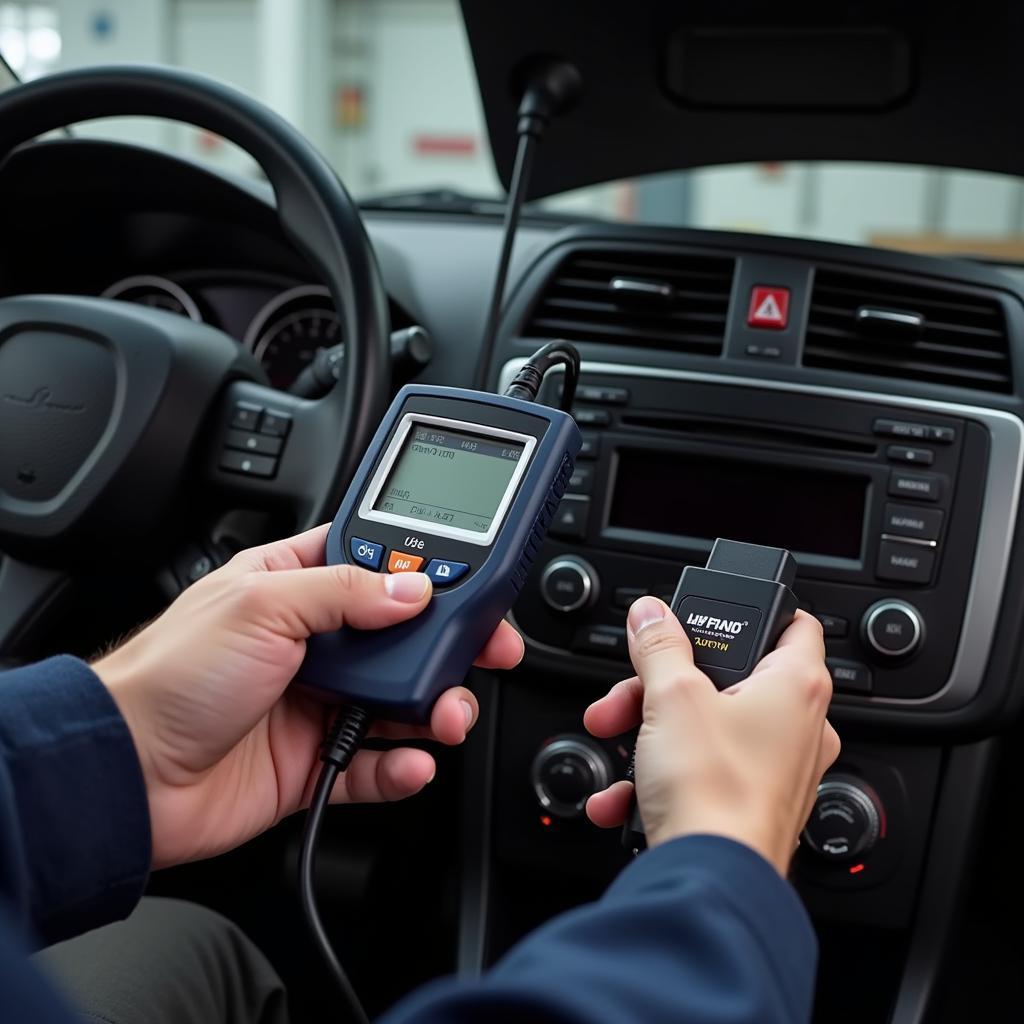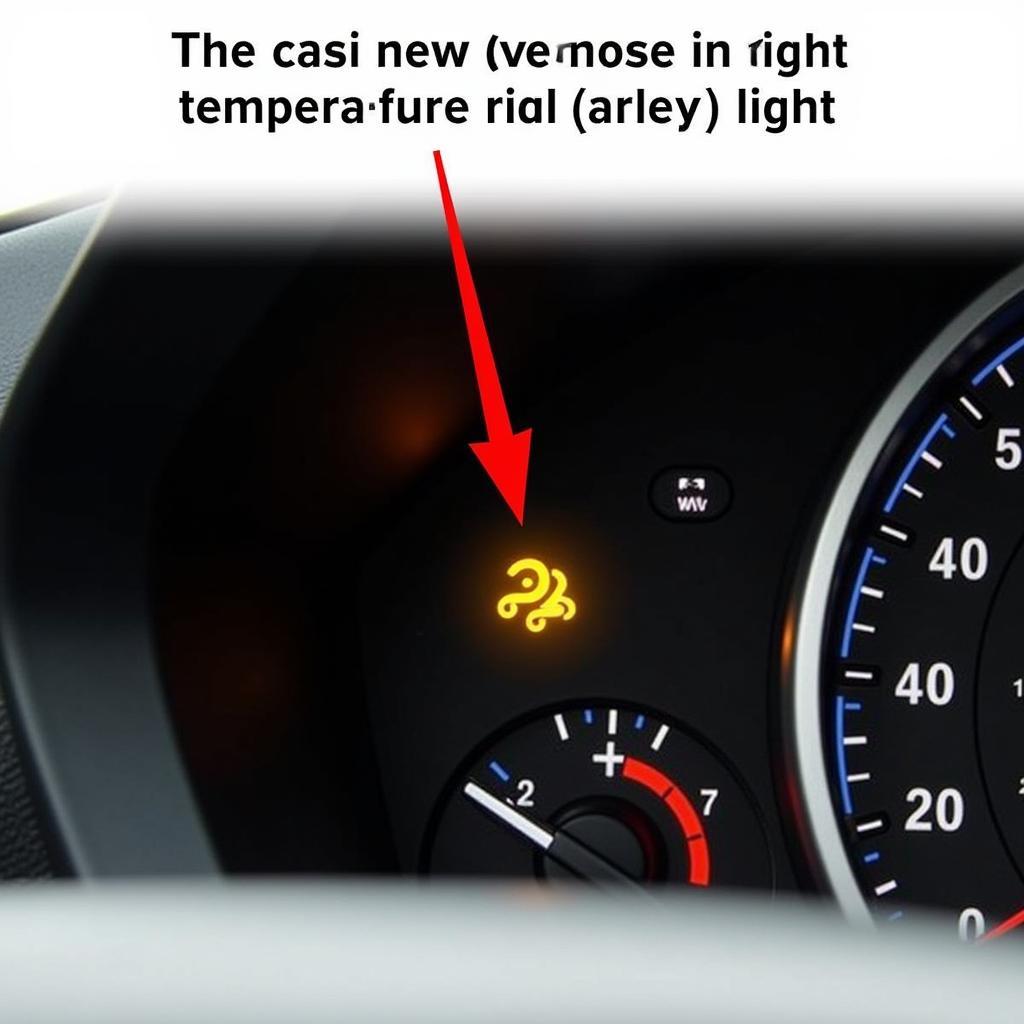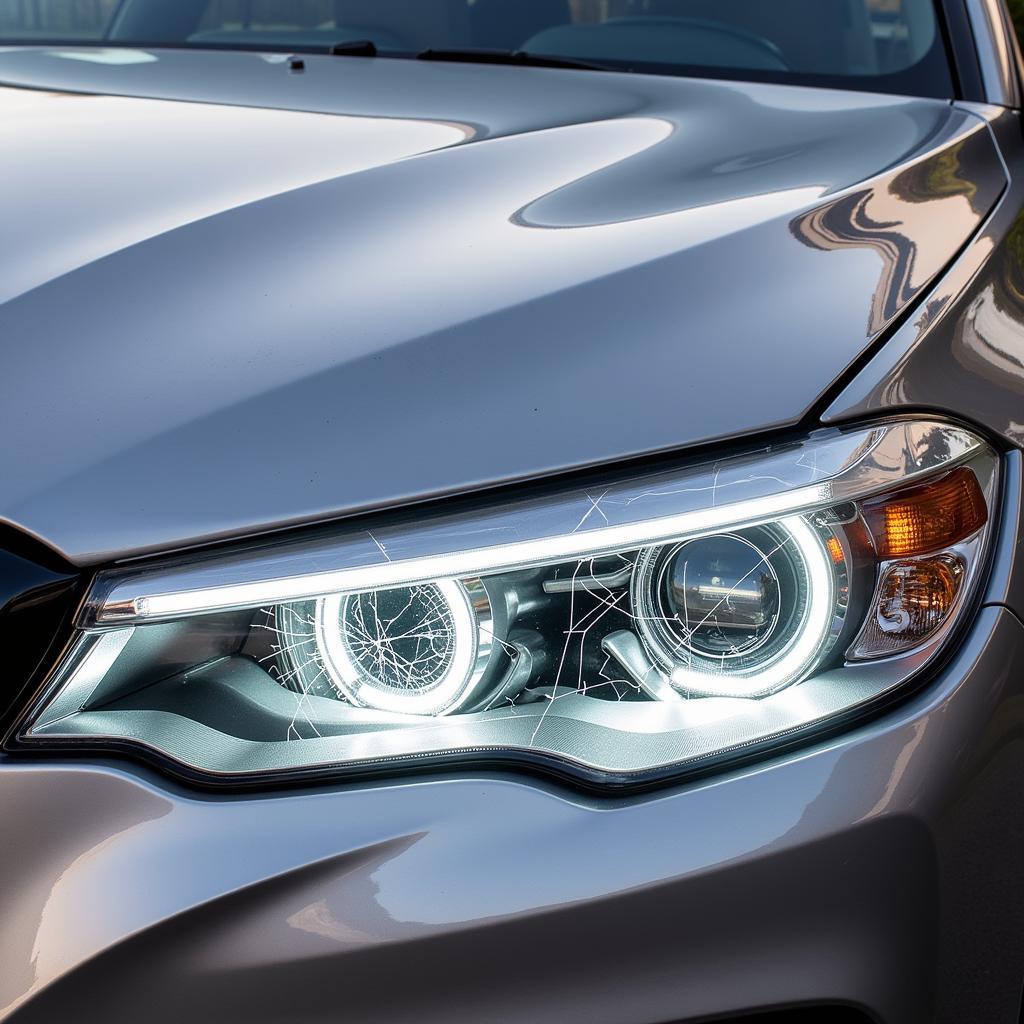
Mechanic Using OBD-II Scanner to Diagnose Car Emissions Problem
The dreaded check engine light illuminates, and your car’s onboard diagnostic system (OBD) whispers “emissions problem.” This scenario is familiar to many car owners, often leading to anxiety and uncertainty. This article dives into the common causes of a check engine light related to emissions, helping you understand what’s happening under your hood and what steps to take next.
Decoding the Check Engine Light for Emissions Problems
The check engine light, also known as the malfunction indicator lamp (MIL), isn’t always a sign of catastrophic engine failure. It’s your car’s way of communicating a problem detected by the OBD system. When related to emissions, this light often indicates an issue impacting your vehicle’s ability to control and minimize harmful pollutants released into the environment. Understanding the underlying cause is crucial for effective car repair.
Common Culprits Behind Check Engine Light Emissions Issues
A range of issues can trigger the check engine light for emissions. Here’s a breakdown of some common culprits:
-
Faulty Oxygen Sensor: The oxygen sensor monitors the amount of unburned oxygen in the exhaust. A malfunctioning sensor can lead to incorrect fuel mixture adjustments, affecting emissions and fuel efficiency.
-
Loose or Damaged Gas Cap: A simple loose or cracked gas cap can allow fuel vapors to escape, triggering the check engine light. This is an easy fix but often overlooked.
-
Malfunctioning Catalytic Converter: The catalytic converter plays a vital role in reducing harmful emissions. A failing converter can significantly increase pollutant output.
-
Evaporative Emission Control System (EVAP) Issues: The EVAP system prevents fuel vapors from escaping into the atmosphere. Leaks or blockages within this system can trigger the check engine light.
-
Faulty Mass Airflow Sensor (MAF): The MAF sensor measures the amount of air entering the engine, influencing the fuel-air mixture. A faulty MAF sensor can lead to improper combustion and increased emissions.
-
Spark Plugs and Ignition System Problems: Worn-out spark plugs or issues with the ignition system can lead to incomplete combustion, increasing emissions and reducing engine performance.
Diagnosing and Fixing the Problem: What to Do When Your Check Engine Light Comes On
Ignoring a check engine light related to emissions can lead to further damage and potentially fail your vehicle’s emissions test. Follow these steps:
-
Don’t Panic: The check engine light doesn’t always signify an immediate emergency. However, it’s best to get it checked as soon as possible.
-
Use an OBD-II Scanner: An OBD-II scanner is a diagnostic tool that can read the error codes stored in your car’s computer. This helps pinpoint the specific problem area.
-
Research the Error Codes: Once you have the codes, research their meaning. You can find plenty of resources online or consult a repair manual.
-
Consult a Qualified Mechanic: While some simple fixes, like replacing a gas cap, can be done yourself, more complex repairs require professional expertise.
“A quick check with an OBD-II scanner can save you time and money in the long run,” says John Miller, Certified Automotive Technician at Miller’s Auto Repair. “Don’t guess; get a diagnosis.”
 Mechanic Using OBD-II Scanner to Diagnose Car Emissions Problem
Mechanic Using OBD-II Scanner to Diagnose Car Emissions Problem
Preventing Future Emissions Problems: Proactive Car Maintenance
Regular maintenance can significantly reduce the risk of emissions-related issues. Here are some preventative measures:
-
Regular Tune-Ups: Follow your car’s recommended maintenance schedule for tune-ups, including spark plug replacements and other essential checks.
-
Fuel System Cleaning: Periodically cleaning the fuel system can help maintain optimal fuel delivery and combustion.
-
Check Your Gas Cap: Ensure your gas cap is securely tightened after each fill-up.
“Preventative maintenance is key to avoiding costly repairs and keeping your car running efficiently,” advises Sarah Johnson, Lead Mechanic at Johnson Automotive Solutions. “Think of it as an investment in your vehicle’s long-term health.”
Conclusion: Addressing Car Repair Check Engine Light Emissions Concerns Proactively
Addressing Car Repair Check Engine Light Emissions concerns promptly and proactively is crucial for maintaining your vehicle’s performance, protecting the environment, and avoiding potential legal issues. Understanding the various causes and solutions, coupled with regular maintenance, can help you keep your car running smoothly and its emissions within acceptable limits. Don’t delay; address that check engine light today.
FAQ
-
What does the check engine light mean for emissions? It indicates a problem with your car’s emission control system, potentially impacting its ability to reduce pollutants.
-
Can I drive with the check engine light on for emissions? While not always an immediate emergency, continued driving could cause further damage. Get it checked soon.
-
How much does it cost to fix an emissions problem? The cost varies greatly depending on the specific issue. A loose gas cap is a cheap fix, while a catalytic converter replacement can be expensive.
-
How can I prevent emissions problems? Regular maintenance, such as tune-ups and fuel system cleaning, are essential for preventing emissions issues.
-
What is an OBD-II scanner? It’s a diagnostic tool that reads error codes from your car’s computer, helping pinpoint the problem area.
-
What should I do if my car fails an emissions test? Address the underlying issue causing the failure before retesting. A qualified mechanic can help diagnose and fix the problem.
-
Are there different types of emission systems? Yes, different car models and years have varying emission control systems. Consult your car’s manual or a mechanic for specific information about your vehicle’s system.
Common Situations and Questions
- My check engine light is flashing, is it serious? A flashing check engine light often indicates a serious problem requiring immediate attention. Stop driving as soon as it’s safe and have your car towed to a mechanic.
- I just filled up my gas tank, and the check engine light came on. Is it the gas cap? It could be a loose or damaged gas cap, but it’s best to have it checked to be sure.
- My car is running rough, and the check engine light is on. Could it be emissions related? Yes, a rough running engine can be a symptom of various emissions problems, such as a faulty oxygen sensor or MAF sensor.
Related Articles and Resources
- Understanding your car’s emission system
- Troubleshooting common check engine light problems
- DIY car maintenance tips for beginners
Need further assistance? Contact us via WhatsApp: +1(641)206-8880 or Email: [email protected]. Our customer support team is available 24/7.



